AN ARCHAIC BRONZE RITUAL FOOD VESSEL AND COVER, DINGEastern Zhou Dynasty/Spring and Autumn period
Of compressed globular form supported on three cabriole legs, flanked by a pair of slightly flared rectangular handles decorated with key-fret patterns, surmounted by a domed cover with a flared circular finial cast with key-fret patterns, the body with two bands of interlocked dragons divided by a single raised band, the cover similarly decorated with bands of interlocked dragons. 34.4cm (13 1/2in) wide. (2).Footnotes東周/春秋 青銅蟠龍紋蓋鼎
Provenance: a European private collection
來源:歐洲私人收藏
Notable for its crisp decoration of interlocking chilong designs, the present tripod vessel displays the technical advancements achieved in bronze casting during the Zhou dynasty.
Ding vessels are among the most significant products of the Bronze Age in China. They were used in ritual ceremonies to present food offerings to the ancestors and were associated with royal power, authority and legitimacy to the throne. According to the 'Book of Rites', Zhouli, compiled during the 12th century BC, and the 'Commentary of Zuo', Zuozhuan, dating to the late 4th century BC, the possession of a bronze ding was considered a concrete sign of of heaven-bestowed legitimacy and continued heavenly protection and favour; see J.Rawson, Chinese Bronzes: Art and Ritual, London, 1987, p.11.
Ding vessels were initially made of pottery in the early Neolithic period. Bronze was far scarcer and required significantly more labour than ordinary ceramic production. In addition, the more elaborate decoration employed on bronze vessels demonstrated their exalted function. The earliest datable ding made of bronze appear to have been produced towards the end of the Xia dynasty (c.2070-1600 BC). At this time, their shape consisted of a flat-bottomed bowl with thin walls, topped by two vertical handles and supported by three triangular hollow legs. By the Shang dynasty, ding vessels were still thinly cast and had a deep rounded body, however, towards the end of the 11th century BC, the body became rounder and its legs were cylindrical and full-bodied.
Ding vessels have been excavated in large numbers from Shang and Zhou dynasty burials of the highest-ranking members of society. The tomb of Fu Hao, consort of King Wu Ding of the late Shang dynasty, for example, contained over twenty-six ding specimens. see 'Corpus of Chinese Bronzes' Zhongguo qingtongqi quanji, Beijing, 1996-1998, vol.11.
Compare with a similar bronze ding and cover, late Spring and Autumn period, illustrated by J.So, Eastern Zhou Ritual Bronzes from the Arthur M. Sackler Collections, vol.III, New York, 1995, pl.13, p.131.
See also a similar large archaic bronze tripod ding and cover, Spring and Autumn period, which was sold at Bonhams London, 14 May 2009, lot 137.
AN ARCHAIC BRONZE RITUAL FOOD VESSEL AND COVER, DINGEastern Zhou Dynasty/Spring and Autumn period
Of compressed globular form supported on three cabriole legs, flanked by a pair of slightly flared rectangular handles decorated with key-fret patterns, surmounted by a domed cover with a flared circular finial cast with key-fret patterns, the body with two bands of interlocked dragons divided by a single raised band, the cover similarly decorated with bands of interlocked dragons. 34.4cm (13 1/2in) wide. (2).Footnotes東周/春秋 青銅蟠龍紋蓋鼎
Provenance: a European private collection
來源:歐洲私人收藏
Notable for its crisp decoration of interlocking chilong designs, the present tripod vessel displays the technical advancements achieved in bronze casting during the Zhou dynasty.
Ding vessels are among the most significant products of the Bronze Age in China. They were used in ritual ceremonies to present food offerings to the ancestors and were associated with royal power, authority and legitimacy to the throne. According to the 'Book of Rites', Zhouli, compiled during the 12th century BC, and the 'Commentary of Zuo', Zuozhuan, dating to the late 4th century BC, the possession of a bronze ding was considered a concrete sign of of heaven-bestowed legitimacy and continued heavenly protection and favour; see J.Rawson, Chinese Bronzes: Art and Ritual, London, 1987, p.11.
Ding vessels were initially made of pottery in the early Neolithic period. Bronze was far scarcer and required significantly more labour than ordinary ceramic production. In addition, the more elaborate decoration employed on bronze vessels demonstrated their exalted function. The earliest datable ding made of bronze appear to have been produced towards the end of the Xia dynasty (c.2070-1600 BC). At this time, their shape consisted of a flat-bottomed bowl with thin walls, topped by two vertical handles and supported by three triangular hollow legs. By the Shang dynasty, ding vessels were still thinly cast and had a deep rounded body, however, towards the end of the 11th century BC, the body became rounder and its legs were cylindrical and full-bodied.
Ding vessels have been excavated in large numbers from Shang and Zhou dynasty burials of the highest-ranking members of society. The tomb of Fu Hao, consort of King Wu Ding of the late Shang dynasty, for example, contained over twenty-six ding specimens. see 'Corpus of Chinese Bronzes' Zhongguo qingtongqi quanji, Beijing, 1996-1998, vol.11.
Compare with a similar bronze ding and cover, late Spring and Autumn period, illustrated by J.So, Eastern Zhou Ritual Bronzes from the Arthur M. Sackler Collections, vol.III, New York, 1995, pl.13, p.131.
See also a similar large archaic bronze tripod ding and cover, Spring and Autumn period, which was sold at Bonhams London, 14 May 2009, lot 137.


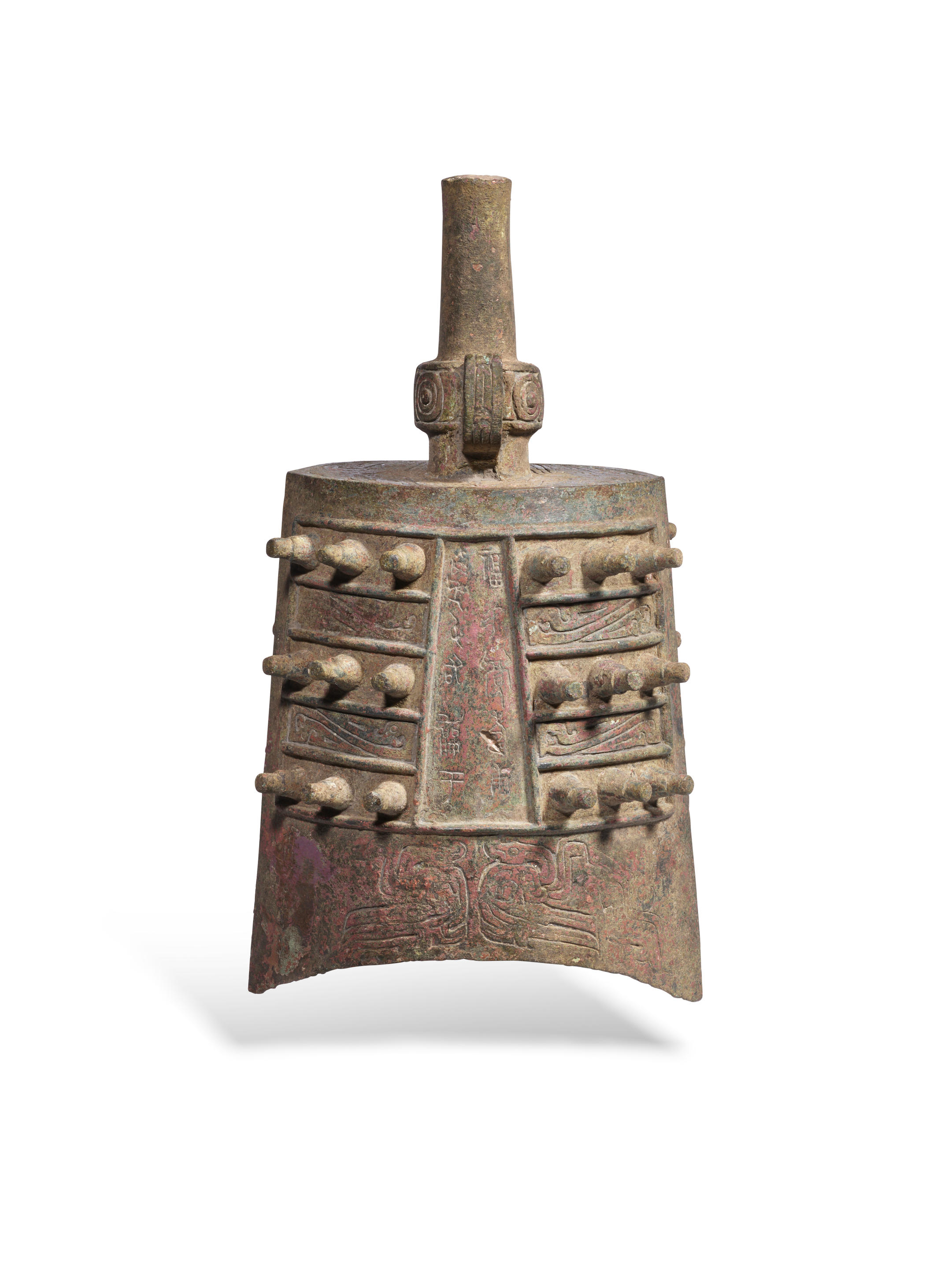
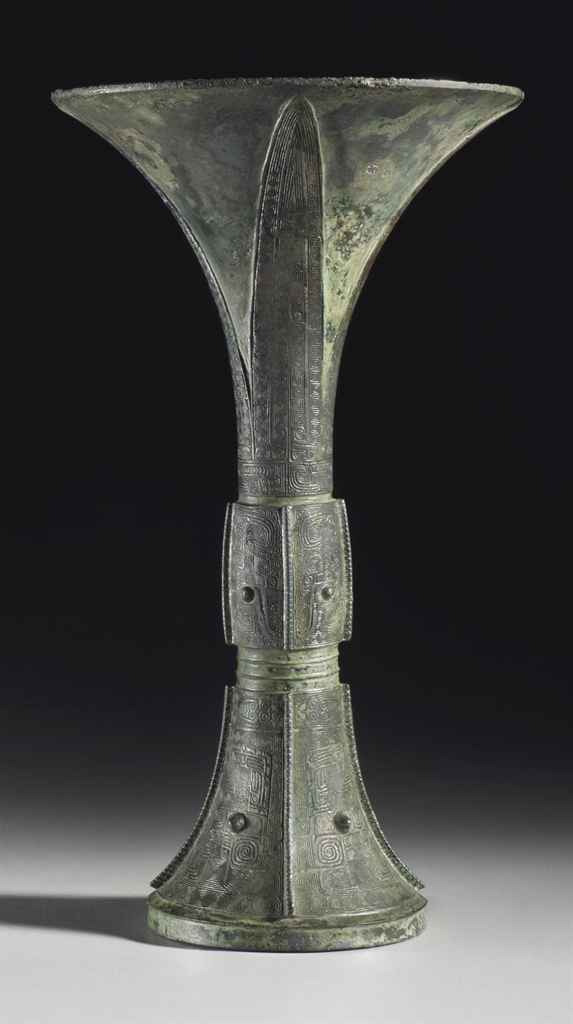
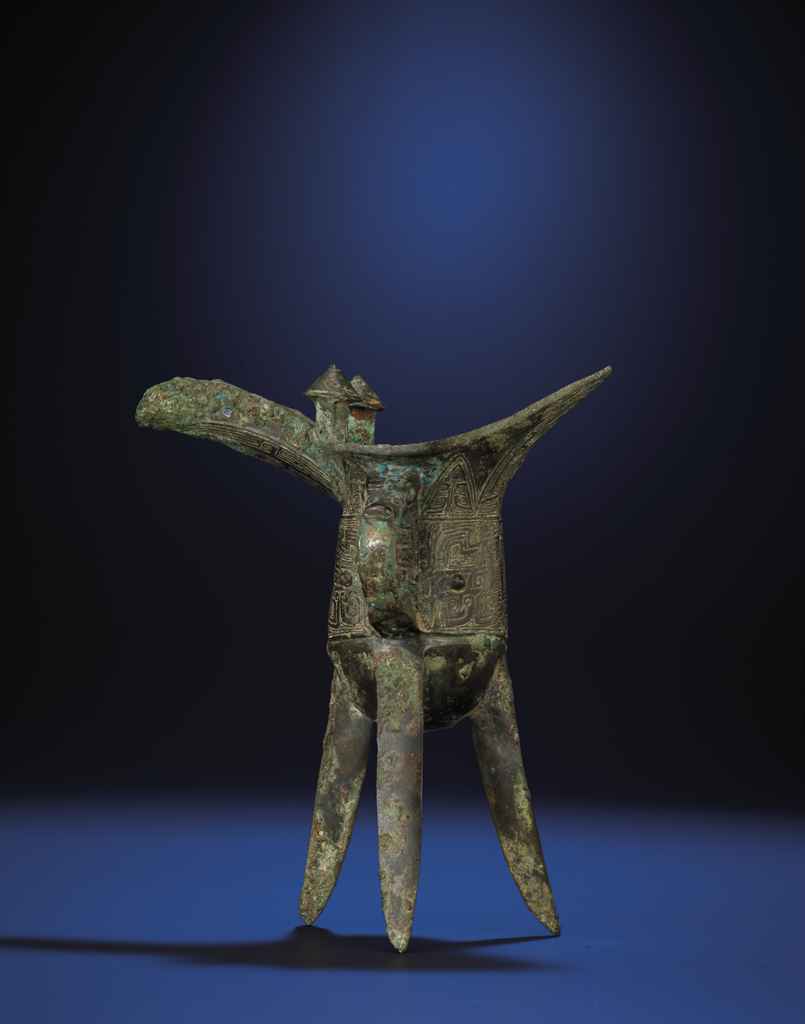
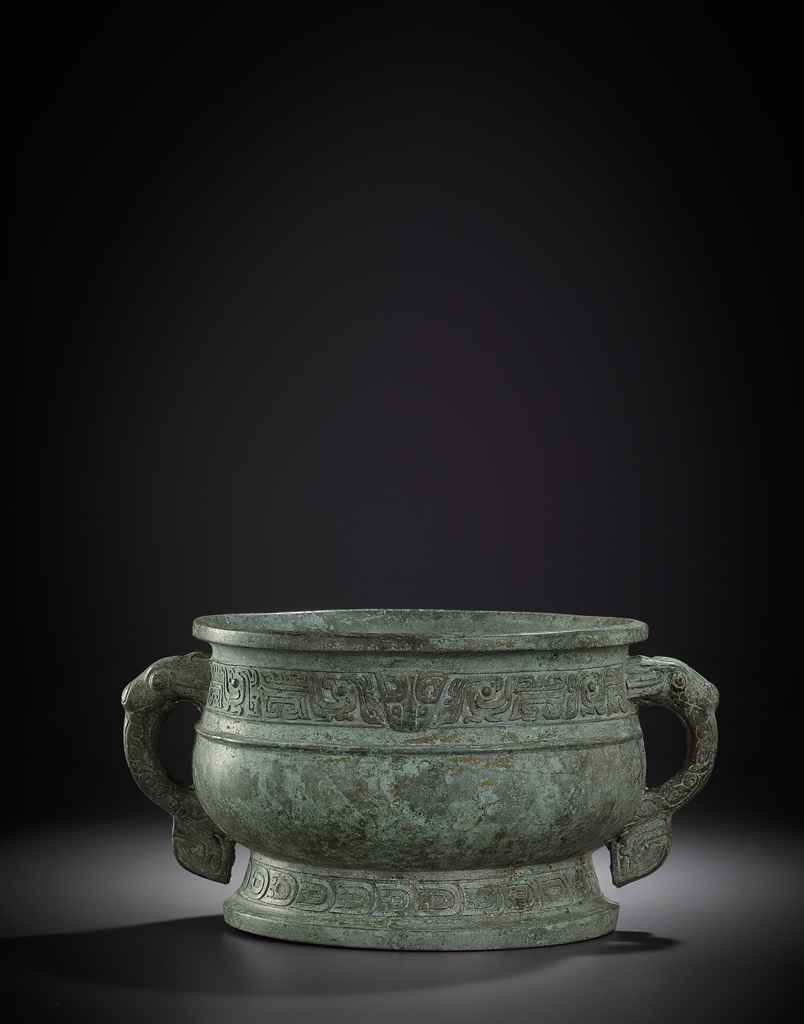
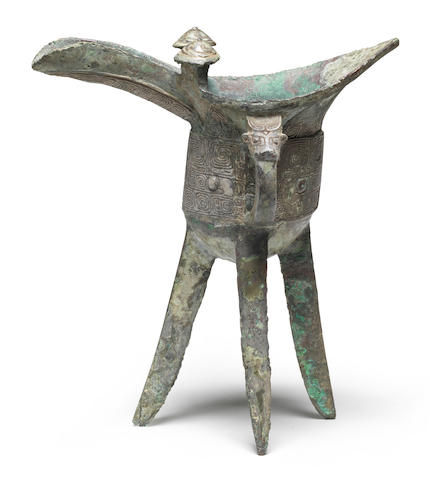
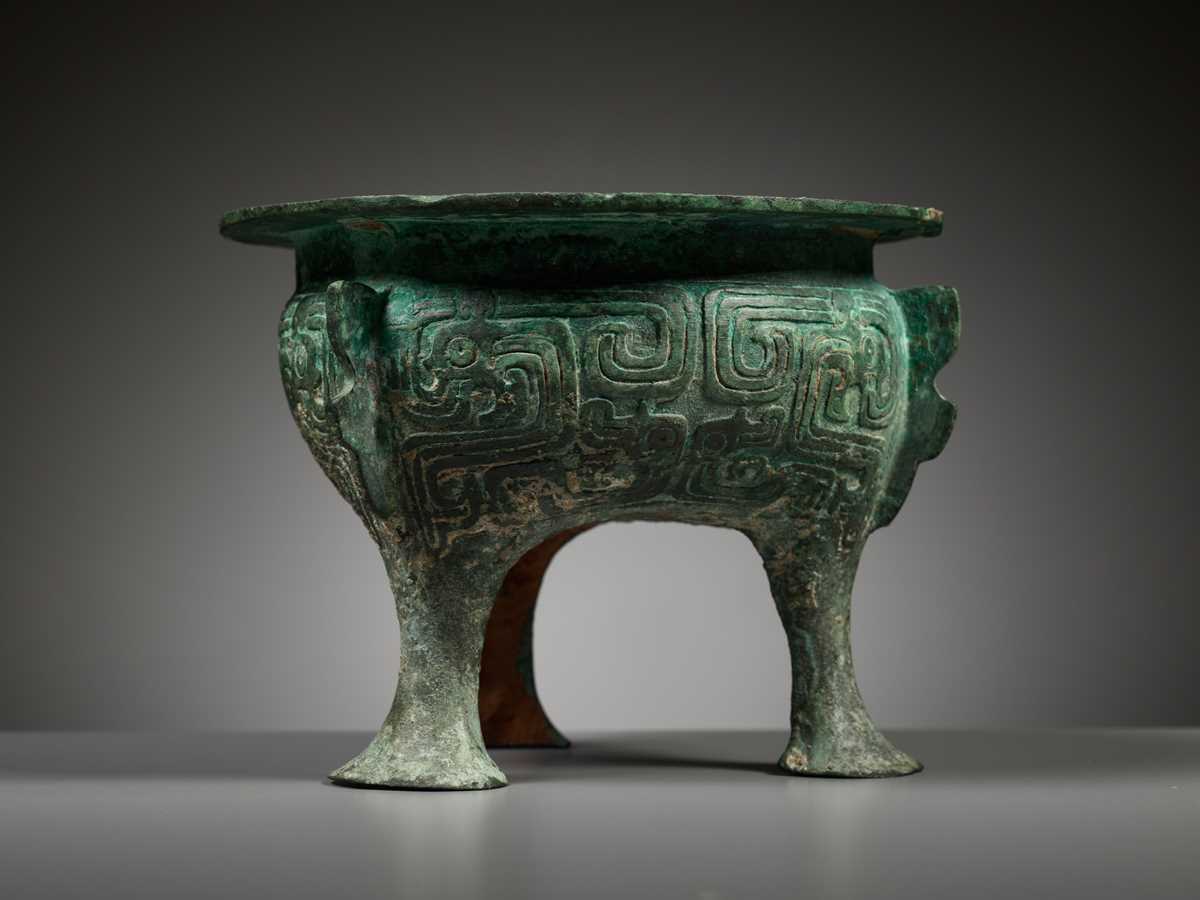
.jpg)
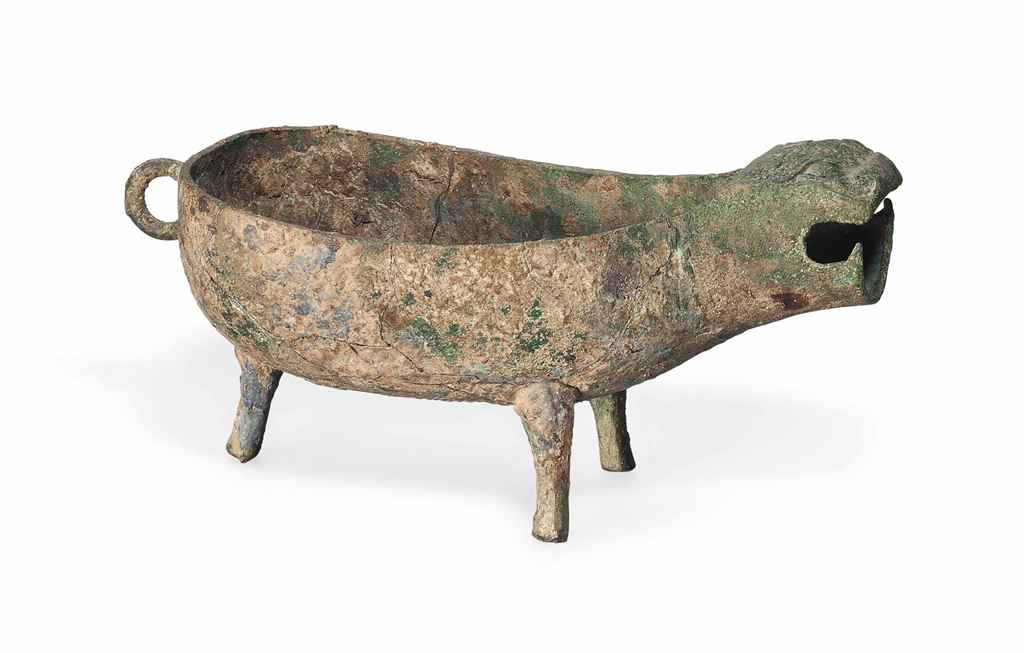
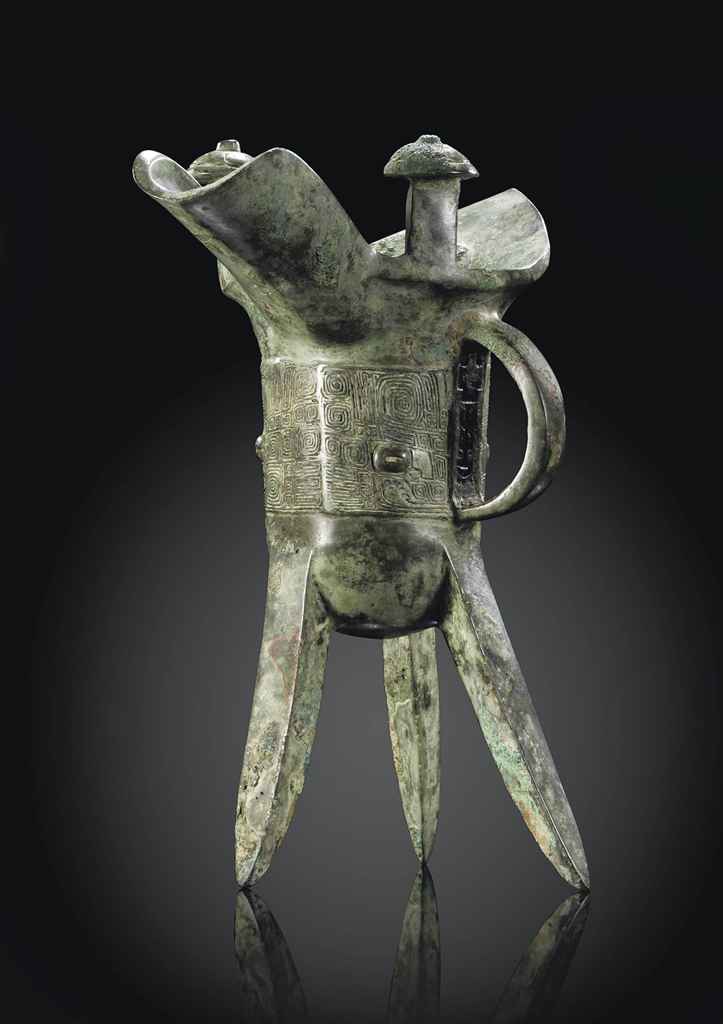
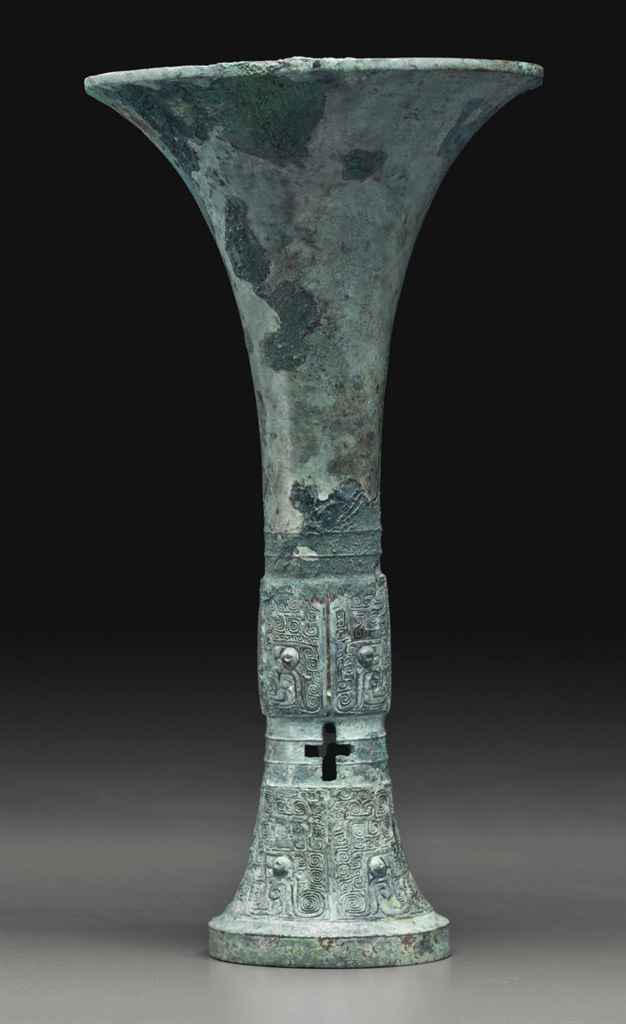
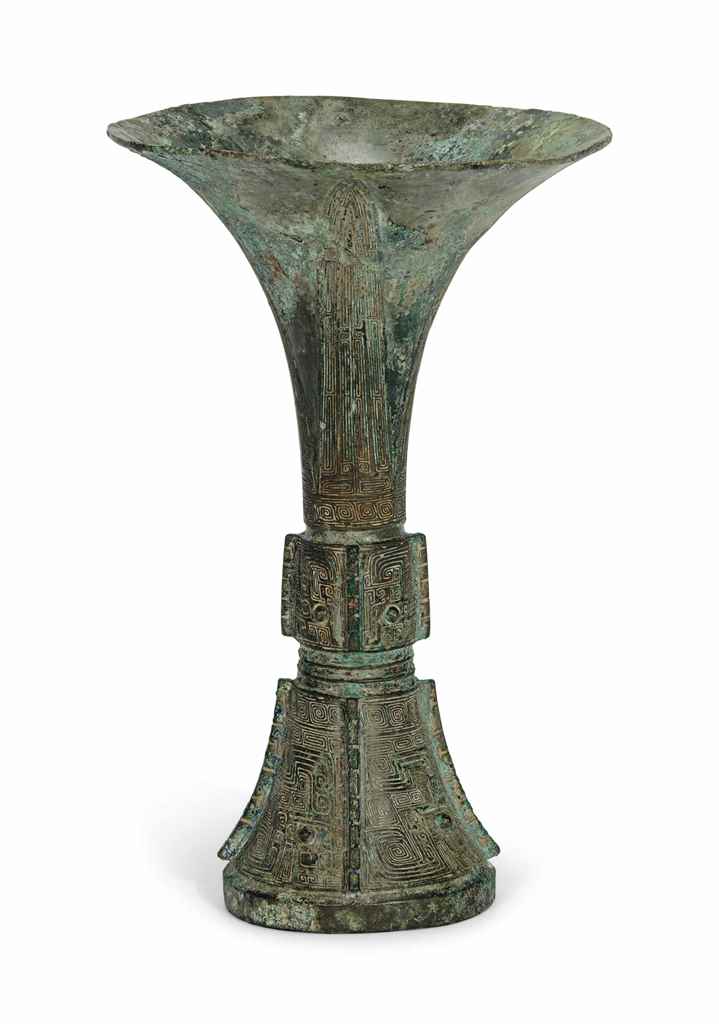

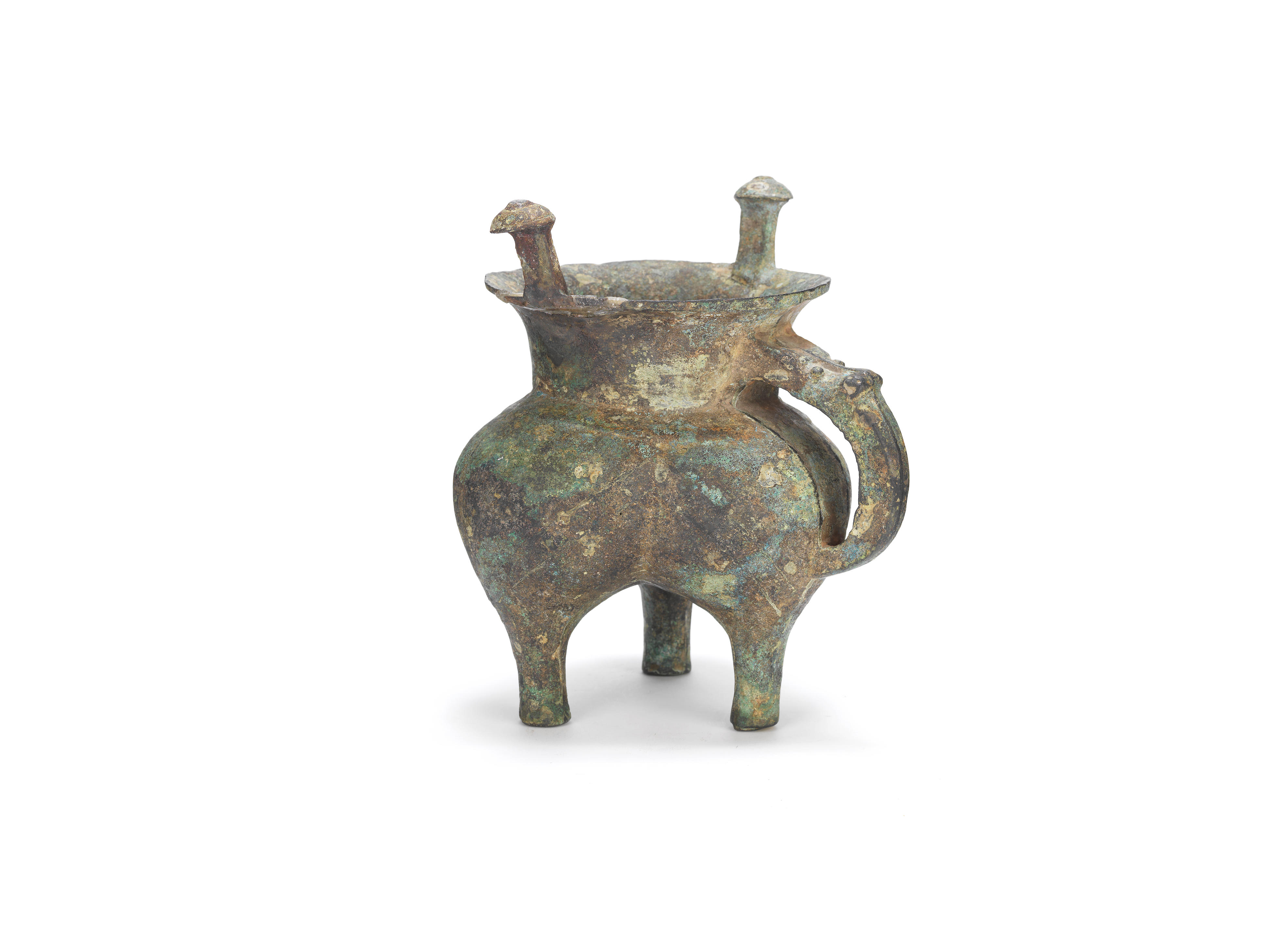
Testen Sie LotSearch und seine Premium-Features 7 Tage - ohne Kosten!
Lassen Sie sich automatisch über neue Objekte in kommenden Auktionen benachrichtigen.
Suchauftrag anlegen